With their flashy appearance and lively temperament, Hamburg chickens are a joy to keep and a true pleasure to watch.
Whether you’re an experienced chicken farmer looking for a flashy addition to your flock or a beginner, we’ll explore the origins, characteristics, backyard behavior and all there is to know about this unique bird breed.
Table of Contents
History
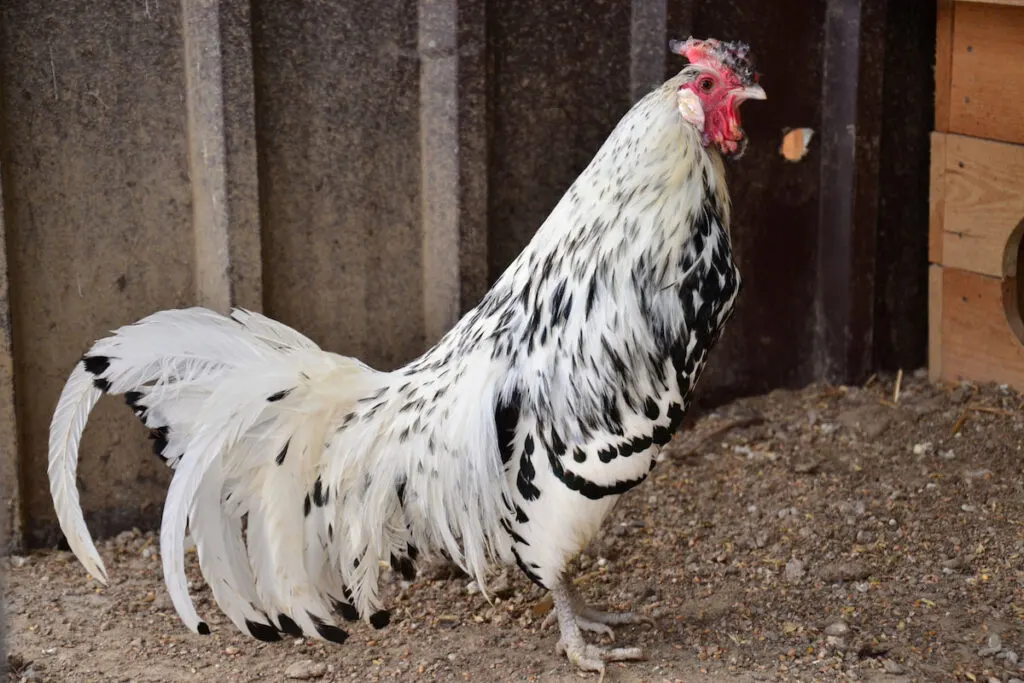
This fancy breed has a rich history that dates back to the 14th century when Hamburg chickens were discovered in Holland.
Although the breed has a German name, there is speculation that Hamburgs may hail from the Mediterranean region, possibly Turkey.
Dutch farmers worked to improve the breed, eventually developing the Golden Penciled and Silver Penciled Hamburg varieties.
These breeds eventually arrived in England, where they were exhibited in a chicken show for the first time in the early 1800s.
Initially, breeders believed that Hamburg chickens were a cross between common farm chickens and pheasants.
This resulted in people referring to them as “Pheasant Fowl”, “Yorkshire Pheasant”, or simply “Pheasants.”
The breed was eventually given the name “Hamburg chicken” in the 1840s.
The English enjoyed the breed and invested in its improvement to create several different varieties, including the Golden Spangled, Silver Spangled, Black, and White.
Hamburg chickens arrived in America in the late 1850s where they gained popularity for their exceptional egg-laying capabilities.
However, their fame was short-lived with the arrival of the Leghorn breed in the late 1890s.
Despite being known for laying up to 200 eggs per year, Hamburgs are small birds that lay small eggs.
However, their beauty continues to be appreciated by poultry farmers, even as the breed continues to become rare.
The American Poultry Association recognized all six standard varieties of Hamburg chickens in their Standard of Perfection in 1874, including the Golden Penciled, Silver Penciled, Golden Spangled, Silver Spangled, White, and Black.
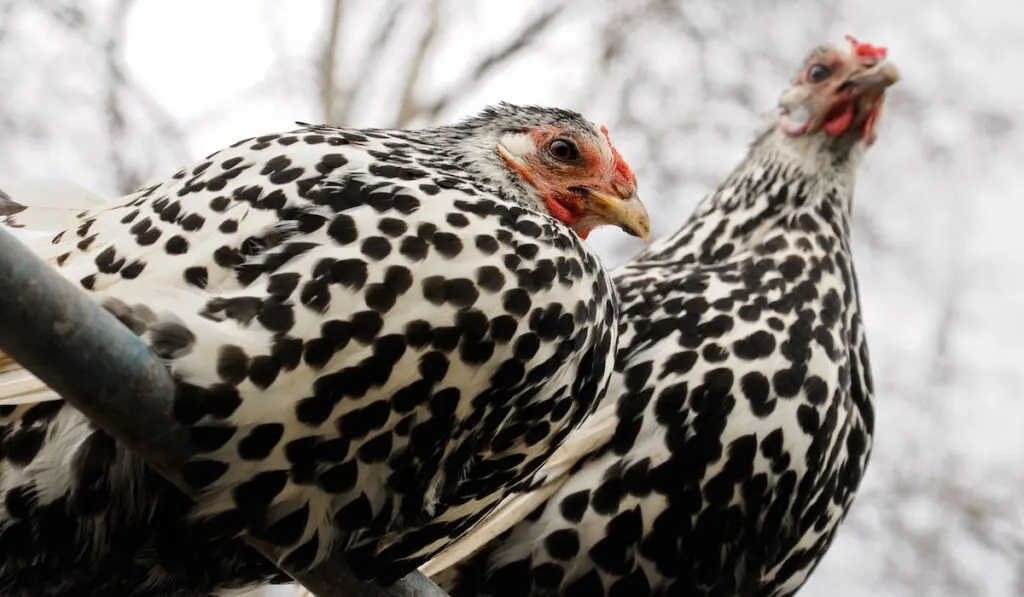
Appearance
Do you like fancy-looking chicken? You cannot go wrong with any of the Hamburg chicken varieties. These sleek-feathered beauties come in a variety of colors and will surely add personality to any coop.
The breed is generally a hit with chicken farmers who love to keep ornamental breeds for keep’s sake or for show exhibitions.
Hamburgs are elegant and compact birds with broad, flat shoulders, well-rounded breasts, and sweeping tails.
Roosters are particularly stunning. Their strong and striking appearance earns them many admirers in poultry shows.
They are available in over 10 varieties (only six are recognized by APA), and their sizes vary depending on the bird variety.
Penciled Hamburgs are the smallest, Spangled Hamburgs are intermediate in size, and plain White and Black varieties are the largest.
All Hamburg varieties have red-colored rose combs, standard plumage, and white earlobes. These chickens also have round and smooth wattles, small-pointed rose combs, and featherless legs.
The color of the legs varies from one Hamburg variety to another. Most Hamburg chickens have gray legs except for the Black variety, which has black legs.
In addition, the birds have short, curved, dark horn beaks, and their necks are fully feathered.
What’s more, the skin and bones of the Hamburg chicken differ from those of a standard chicken in that they are gray in color.
The appearance of Hamburg chicks varies depending on their variety, but one thing is for sure — they are all undeniably cute!
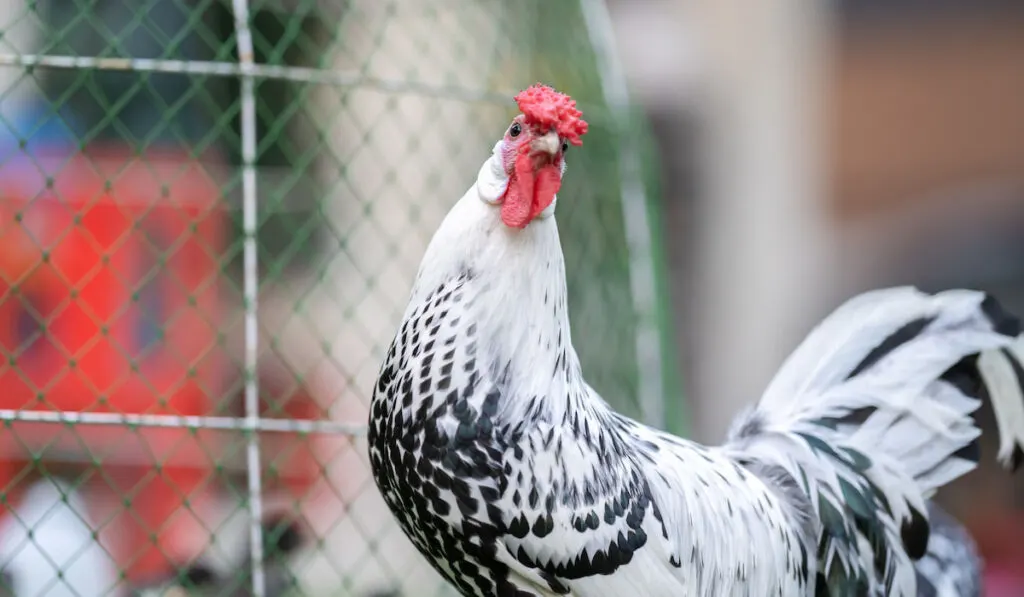
Size
Hamburg chickens are a small-bird breed. The birds do not weigh more than 5 pounds, making them one of the smallest chicken breeds around.
The table shows the standard weights of Hamburg chicken in the different stages of life:
| Chicken | Weight (lbs.) |
| Cock | 5 |
| Hen | 4 |
| Cockerel | 4 |
| Pullet | 3.5 |
| Bantam cock | 1.7 |
| Bantam hen | 1.4 |
Besides its small stature, the Hamburg breed is not considered a good source of chicken meat because of the color of its skin and bones. Its gray skin and dark bones when butchered are unsightly on a plate.
Egg Production
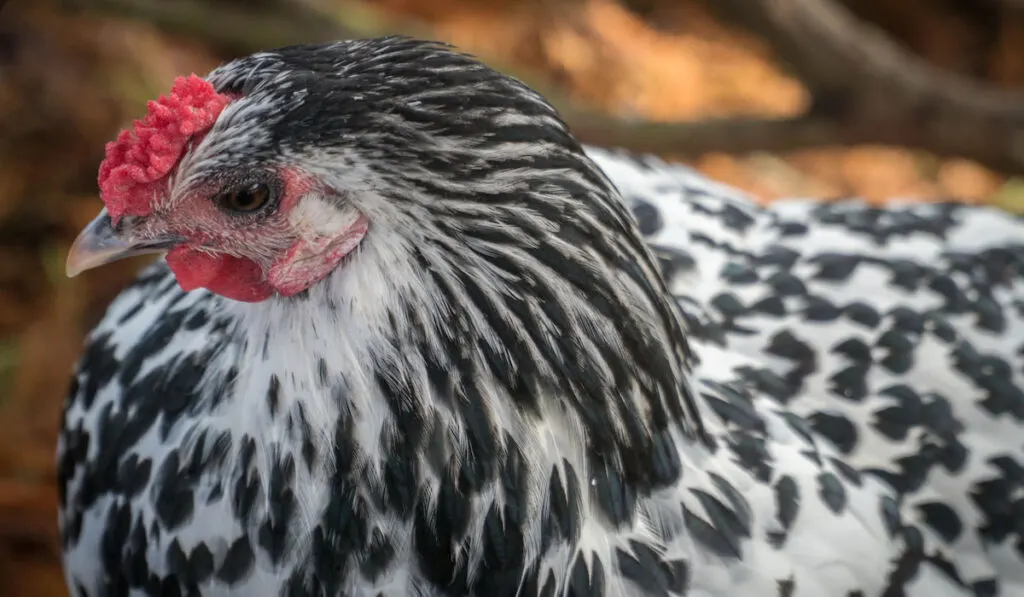
While their meat quality doesn’t appeal to many, their outstanding egg-laying capabilities do not go unnoticed.
So much so that people often refer to them as “Everyday Layers” — they consistently lay four eggs per week.
Hamburgs mature faster and pullets can start laying eggs when they are just 4 months old. The eggs have a glossy white appearance and are smaller, compared to the eggs produced by other chicken breeds.
In a year, you can expect to collect an average of 200 eggs from a hen. The bantam variety is a better layer than the large variety and can produce up to 250 eggs per year.
The true value of Hamburg chickens is not in the number of eggs produced per year but in their ability to keep laying eggs over many years.
Other chicken breeds may produce more eggs during summer, but Hamburg chickens will always rank first when it comes to total output.
Their egg production also doesn’t decline rapidly with age as is the case with other breeds.
They continue laying decent amounts of eggs even as they age.
However, you should note that these birds are not broody, and it is doubtful they will hatch their eggs.
So, if you want to hatch Hamburg eggs, you may have to invest in an incubator or get a broodier bird in your flock to do the job.

Temperament
While Hamburgs are a beautiful and fascinating breed to watch, they are not personable birds and prefer the company of other Hamburgs.
They are quite jumpy and nervous, making them less ideal for chicken owners who love to be close to their birds.
This makes handling them for medical care difficult since these flighty birds will do everything to stay away from you.
If you need to catch them for one reason or another, it’s best to approach them while they are roosting at night.
The chickens are always scanning for aerial threats and the roosters keep flapping their wings to make them appear bigger and more intimidating than they really are.
You can keep them as pets but be prepared to spend a lot of time looking at them and not cuddling them.
For this reason, they may not be the best choice for kids, but your little ones can still learn a lot from them by observing them during their early morning foraging frenzy.
Hardiness
Hamburgs are hardy in cold conditions but need extra care when it gets extremely cold.
In freezing conditions, it’s advisable to have chicken water warmers on standby to ensure your birds have access to safe drinking water.
Hamburg chickens have a rose comb that’s resistant to frostbite.
This is beneficial to farmers who live in areas that experience sub-zero winter temperatures as it means fewer risks for their birds.
Although adult Hamburgs are known for their hardiness, their chicks are more delicate than those of other breeds.
Therefore, if you plan on raising Hamburg chicks, it is essential to minimize their stress levels by taking good care of them.
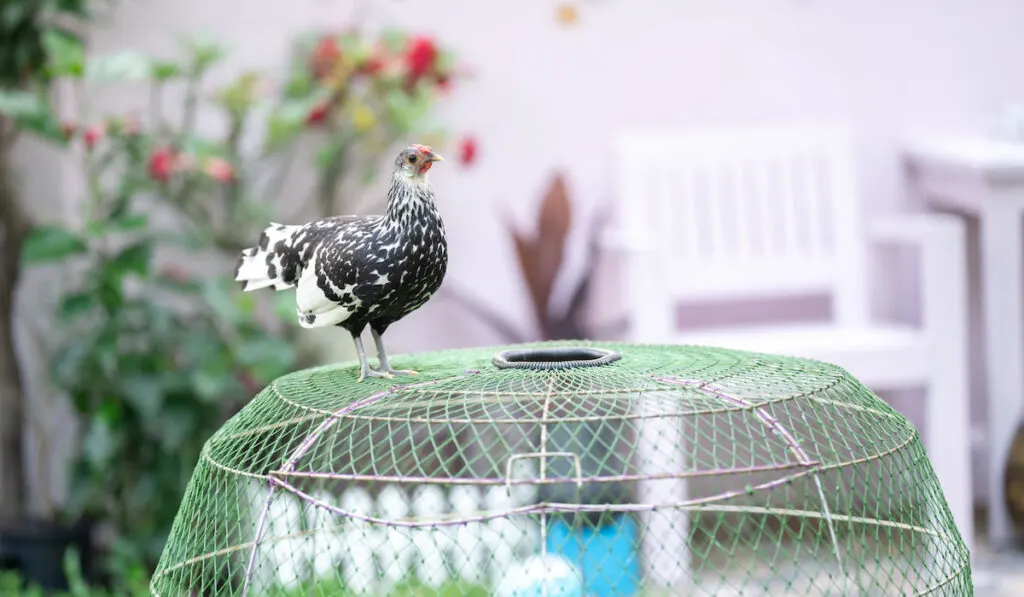
Backyard Behavior
If you want to keep Hamburgs, be keen to allow them to free-range since they don’t like confinement.
These chickens get most of their food through foraging, making them an economical breed. Hamburgs are also good at protecting themselves from predators, thanks to their agility.
One notable backyard characteristic of the Hamburg chicken is their love of flying.
While they can’t remain airborne for long like wild ducks or geese, they do their best to reach the highest perch and prefer to roost high in trees.
And since these birds are flighty, you will need a large fence or enclosure to keep them within your property.
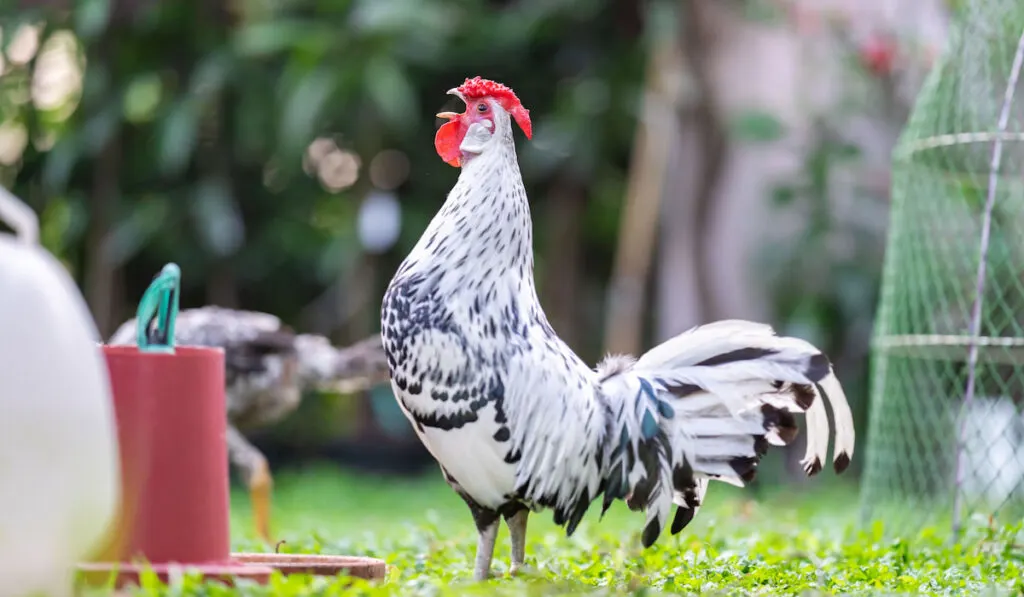
Noise Levels
Hamburgs are one of the noisier chicken breeds.
These lively and animated birds are always chattering away, making them some of the most amusing and engaging chickens you can have in your flock.
They are particularly vocal after laying eggs or when something exciting catches their attention in the yard.
Some people say that the Hamburgs in their flock make “wild” noises that are different from the sounds that other chickens make.
Roosters are also loud and love to crow to signal the start of a new day and assert their dominance.
Final Thoughts
If you love ornamental birds, you can never go wrong with the Hamburg chicken breed. These beautiful birds make a great addition to any small farm.
They blend well with existing flocks and are a great starter breed because of their excellent foraging ability.
However, these chickens are not cuddly or broody and you will have to get an incubator or a broody hen if you want to hatch their eggs.
Resources
- https://www.thefeatherbrain.com/blog/hamburg-chickens
- https://petkeen.com/hamburg-chicken/
- https://insteading.com/chickens/breeds/hamburg/
- https://www.roysfarm.com/hamburg-chicken/
- https://www.thehappychickencoop.com/the-hamburg-chicken-breed-profile-all-you-need-to-know/
- https://www.backyardchickencoops.com.au/blogs/learning-centre/hamburg-breed-profile
- https://breeds.okstate.edu/poultry/chickens/hamburg-chickens.html
- https://livestockconservancy.org/heritage-breeds/heritage-breeds-list/hamburg-chicken/
